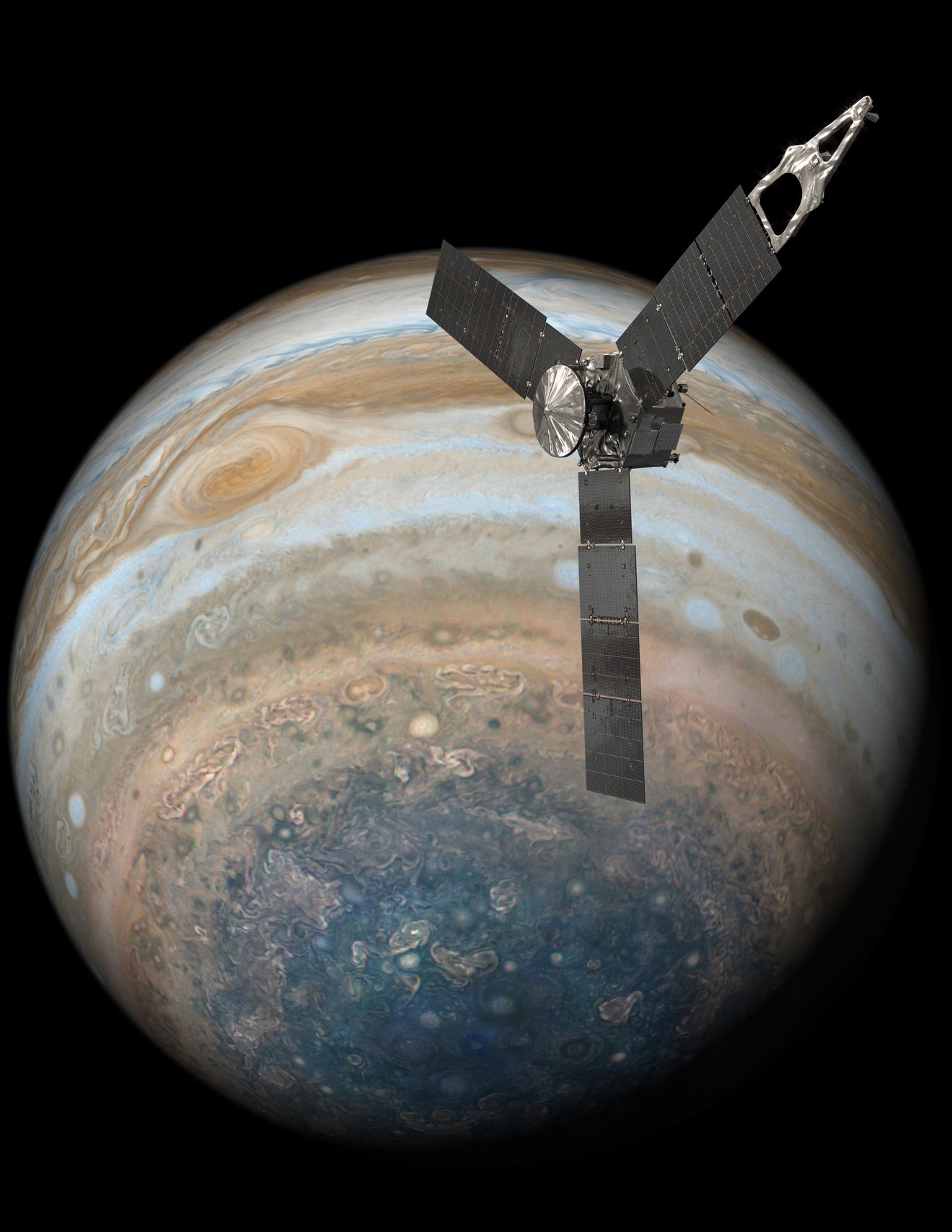Insider Brief:
- After NASA’s Juno spacecraft completed its 47th close pass of Jupiter, the orbiter’s downlink was disrupted.
- The recovery steps were successful and the team is currently downlinking the science data.
- The science data from the solar-powered spacecraft’s most recent flyby of Jupiter and its moon Io appears to be intact.
NASA NEWS RELEASE — December 22, 2022 — NASA’s Juno spacecraft completed its 47th close pass of Jupiter on Dec. 14. Afterward, as the solar-powered orbiter was sending its science data to mission controllers from its onboard computer, the downlink was disrupted.
The issue – an inability to directly access the spacecraft memory storing the science data collected during the flyby – was most likely caused by a radiation spike as Juno flew through a radiation-intensive portion of Jupiter’s magnetosphere. Mission controllers at NASA’s Jet Propulsion Laboratory and its mission partners successfully rebooted the computer and, on Dec. 17, put the spacecraft into safe mode, a precautionary status in which only essential systems operate.
As of Dec. 22, steps to recover the flyby data yielded positive results, and the team is now downlinking the science data. There is no indication that the science data through the time of closest approach to Jupiter, or from the spacecraft’s flyby of Jupiter’s moon Io, was adversely affected. The remainder of the science data collected during the flyby is expected to be sent down to Earth over the next week, and the health of the data will be verified at that time. The spacecraft is expected to exit safe mode in about a week’s time. Juno’s next flyby of Jupiter will be on Jan. 22, 2023.
More About the Mission
NASA’s Jet Propulsion Laboratory, a division of Caltech in Pasadena, California, manages the Juno mission for the principal investigator, Scott J. Bolton, of the Southwest Research Institute in San Antonio. Juno is part of NASA’s New Frontiers Program, which is managed at NASA’s Marshall Space Flight Center in Huntsville, Alabama, for the agency’s Science Mission Directorate in Washington. Lockheed Martin Space in Denver built and operates the spacecraft.
More information about Juno is available at: https://www.nasa.gov/juno and https://www.missionjuno.swri.edu.
Contact Information:
DC Agle
Jet Propulsion Laboratory, Pasadena, Calif.
818-393-9011
Karen Fox / Alana Johnson
NASA Headquarters, Washington
301-286-6284 / 202-358-1501
[email protected] / [email protected]
Deb Schmid
Southwest Research Institute, San Antonio
210-522-2254
SOURCE: NASA
Featured image: Illustration depicting NASA’s Juno spacecraft soaring over Jupiter’s south pole. Credit: NASA/JPL-Caltech
If you found this article to be informative, you can explore more current space industry news, exclusives, interviews, and podcasts.
Share this article:








